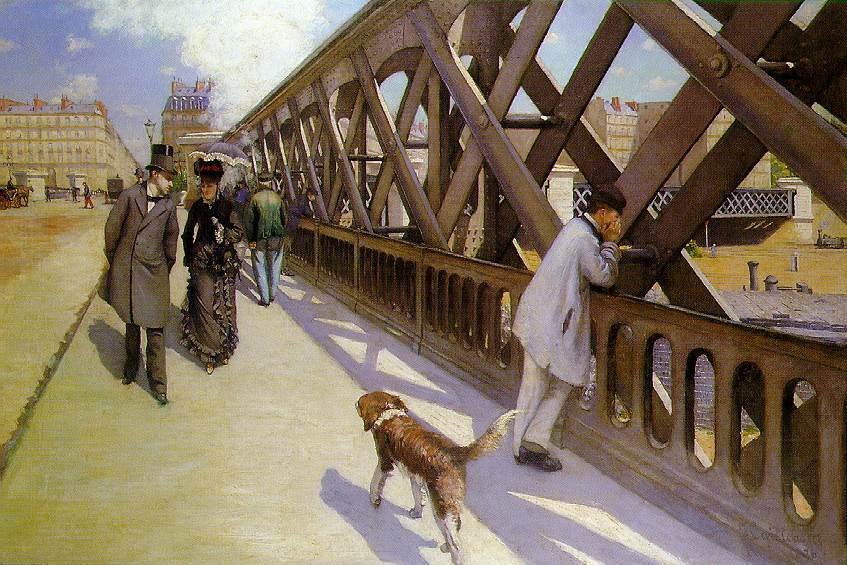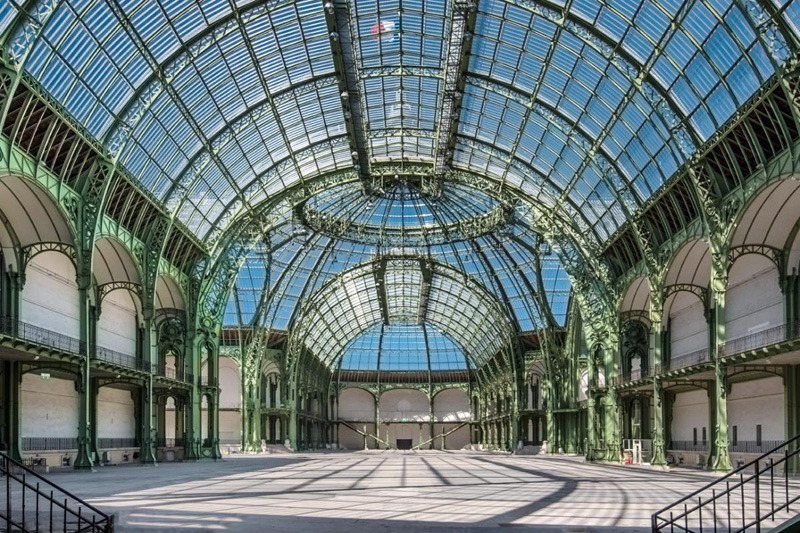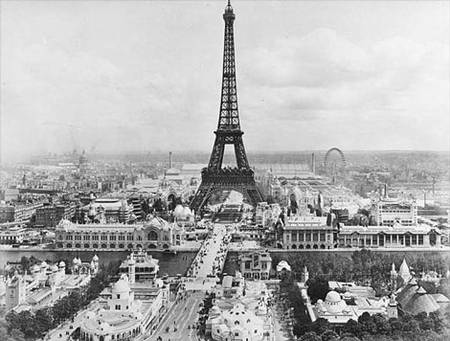Metallic architecture in the 19th century
Download PDF
Emile Zola who admired metallic architecture became its defender: “Space had been gained everywhere, light and air entered freely, and the public circulated with the greatest ease under the bold flights of the far-stretching girders. It was the cathedral of modern commerce, light but solid, made for a nation of customers. […] and all that iron formed, beneath the white light of the windows, an excessively light architecture, a complicated lace-work through which the daylight penetrated, the modern realization of a palace of dreams, of a Babel-like heaping up of the storeys, enlarging the rooms without end”.
Metal began to be used in architecture and civil engineering in the late 18th century. At the same time the Industrial Revolution progressed and iron and cast iron production soared, metal was more and more massively used. The design and practice of architecture was henceforth dramatically transformed.
First employed for technical reasons, metallic architecture was used for the covered markets, train stations, bridges, covered galleries, large pavilions at the World's Fairs and all transitory constructions. The first quality of iron and of his derived products was that it resists to fire. Hence, since 1830, because of candlelight and then gas lighting, all the theaters were built in iron. This material was far more resistant than wood or stone. It allowed to increase spans, or to an equal span to lighten or open buildings and to install large glass walls.
The first metal bridge to be built in Paris was the Pont des Arts, between 1801 and 1804, during the First Consul. Another example of the first metal architectures could be the reconstruction of the cupola of the Corn exchange building that had been destroyed by a fire in 1802. Architect François-Joseph Bélanger and engineer François Brunet were commissioned to rebuild the roof and by 1811 a new cupola made of iron covered with copper leaves shined above the building. In 1838, the copper was replaced by glass. Closed in 1873, the building was allocated to the Chamber of Commerce in 1885 and was transformed into the Commodity market by architect Henri Blondel who covered it with stone.
The metal production increased tenfold between 1820 and 1870, the metal was everyday more affordable for builders. Cast-Iron, which is a crude product of the high furnace, was used for the columns and decorative elements, iron for the skeleton and the structures. It was only after 1890 that steel was massively used, as before its utilization was limited to mechanical constructions and to weapons. In 1845, the Parisian carpenter strike, that lasted several months, contributed to accelerate the use of metal into architecture. With no wood, the builders used iron to achieve their construction, and participated to spread out a material that was until then barely used.
At the mid-century, a debate aroused between the defenders of Eclectisme, who copied past styles, and the rationalists for who iron was a new material which could generate innovations. The Sainte-Geneviève library in Paris built in 1844-151, the Crystal Palace of the World's Fair of 1851 in London, or even the church Saint-Eugène - where slim cast iron columns support the weight of a visible network of ribs - contributed to this new architecture led by Labrouste, Horeau, Boileau and Viollet le Duc.
« Iron, iron, and only iron! », are the famous words that Baron Haussmann, when he was prefect of the Seine, told architect Victor Baltard, concerning the Halles Centrales project. By order of Napoleon III, Baltard created covered markets right in the center of Paris, to facilitate trade. Twelve pavilions were thus built out of cast iron, iron and glass between 1850 and 1870. Those buildings showed the different possibilities that metal offered, and became a model to numerous covered markets in France and abroad.
With the World's Fairs , showcases of the countries’ modernity, the States engaged great prestige constructions and displayed their excellence in the art of metal, “an entirely contemporary art […] almost entirely rejecting stone and wood - the raw materials supplied by earth” wrote Huysmans after the Exhibition of 1878. For the London World's Fair of 1851, Joseph Paxton built the Crystal Palace - a giant greenhouse of 3800 tons of cast iron, 700 tons of iron. Modular and industrial surfaces proliferated. Replicas flourished all over the world and the Galerie des Machines of the World's Fair of 1889 in Paris both echoes the Crystal Palace’s accomplishments and takes them even further. For this construction, architect Ferdinand Dutert and engineer Victor Contamin managed a record vault span of 420 meters long, 115 meters wide and 45 meters high. The Eiffel Tower was built for the same Fair. However, the aesthetics of this architecture was not yet accepted by the population.
At the end of the 19th century the School of Chicago, with its leader Louis Sullivan developed autonomous architectural forms using iron, which gave birth to the skyscraper. At the beginning of the twentieth century, metal constructions consumed two thirds of the steel produced in France, and the Art Nouveau style made the use of iron and cast iron an art form.















